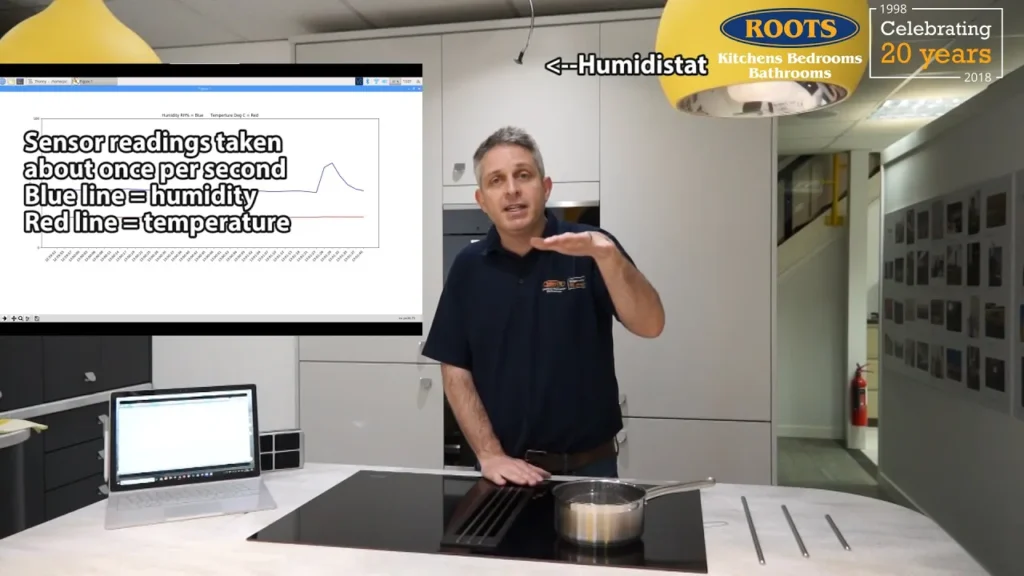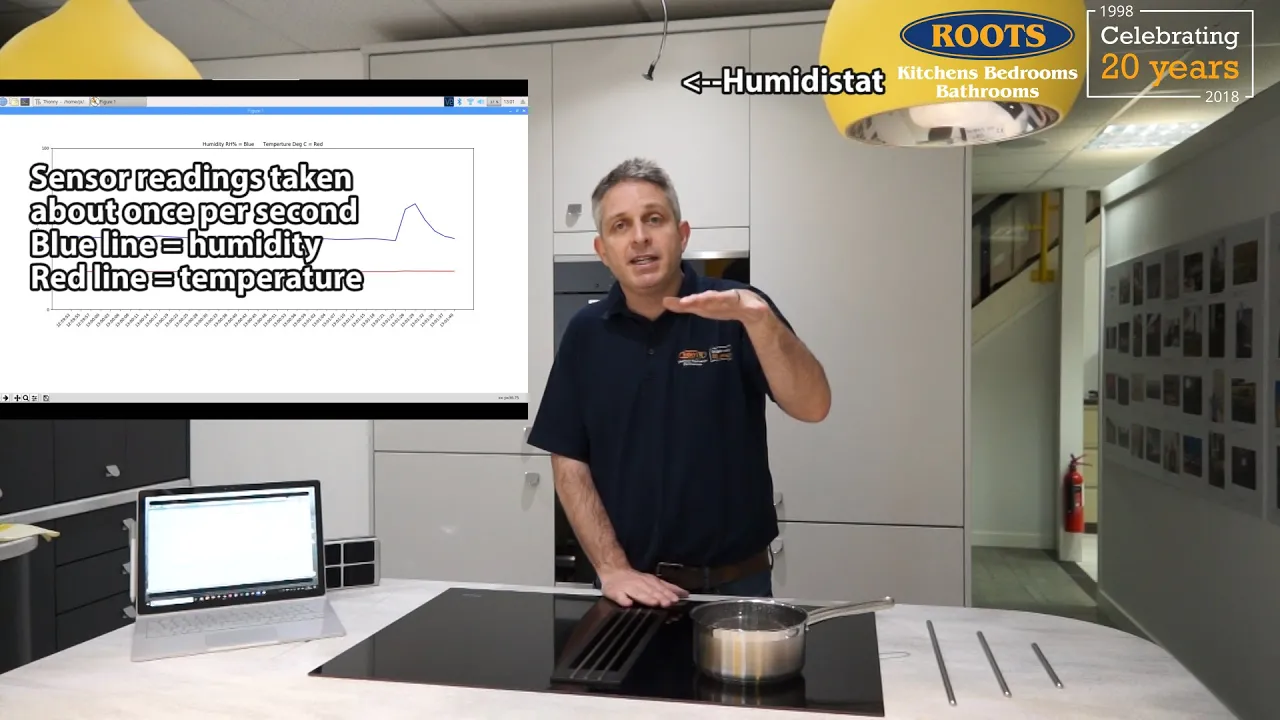There are now extractors which are built into counter top hobs where the air is drawn down through the hob instead of the traditional overhead extractor where the air rises up above.

So, what do extractors do?
They have two jobs:
Firstly, they catch all the moisture and grease coming off the food that your cooking and catch it on the filter of the extractor rather than the cupboard units around the extractor catching it, reducing the amount of cleaning needed.
Extractors have filters built into them and some can be put into the dishwasher when they need cleaning.
Secondly, they remove the smells when cooking.
The extractor can be ducted outside but if you can’t duct it outside you can have carbon filters instead. The carbon filter for the Miele hob in the video above is designed to go into the plinth. Overhead extractor filters are removable from the top. The carbon filter catches the odours and the air gets recirculated back into the room.
Extractors have always been over the top of the hood but there has been a growing trend for a new style of extractor which is built into the hob like this one we have in the showroom.
We did an experiment to see how it works.
First you’ll see the steam coming off the pot of water once it is boiling. When the extractor is not turned on you’ll see the steam rise in the air and when it is turned on you should seeit all be drawn down into the extractor itself.
Just because we can, I built a Raspberry Pie computer with a humidistat sensor built onto it as well, to sense humidity and temperature. I wrote a programme that graphs continuously what the humidity (blue line) and temperature (red line) is.
For the initial test I breathed onto the sensor to see if it works and with a couple seconds because of the slight recording delay, the programme sensed the moisture and temperature of my breath.
So, I turned the hob on with the extractor turned off until we saw steam rising which should be detected by the sensor and shown on our graph.
When I turned the extractor on the humidity should go back to where it originally was with no moisture being detected.
With the extractor on full power we can see the steam coming downwards and the humidity blue line on the graph reduces as the steam is no longer rising.
Are they an effective solution?
Yes! Very effective.
Brilliant when you have island arrangement in your kitchen so you don’t have to duck under an extractor if you’re talking to people while hosting or cooking with the family.

